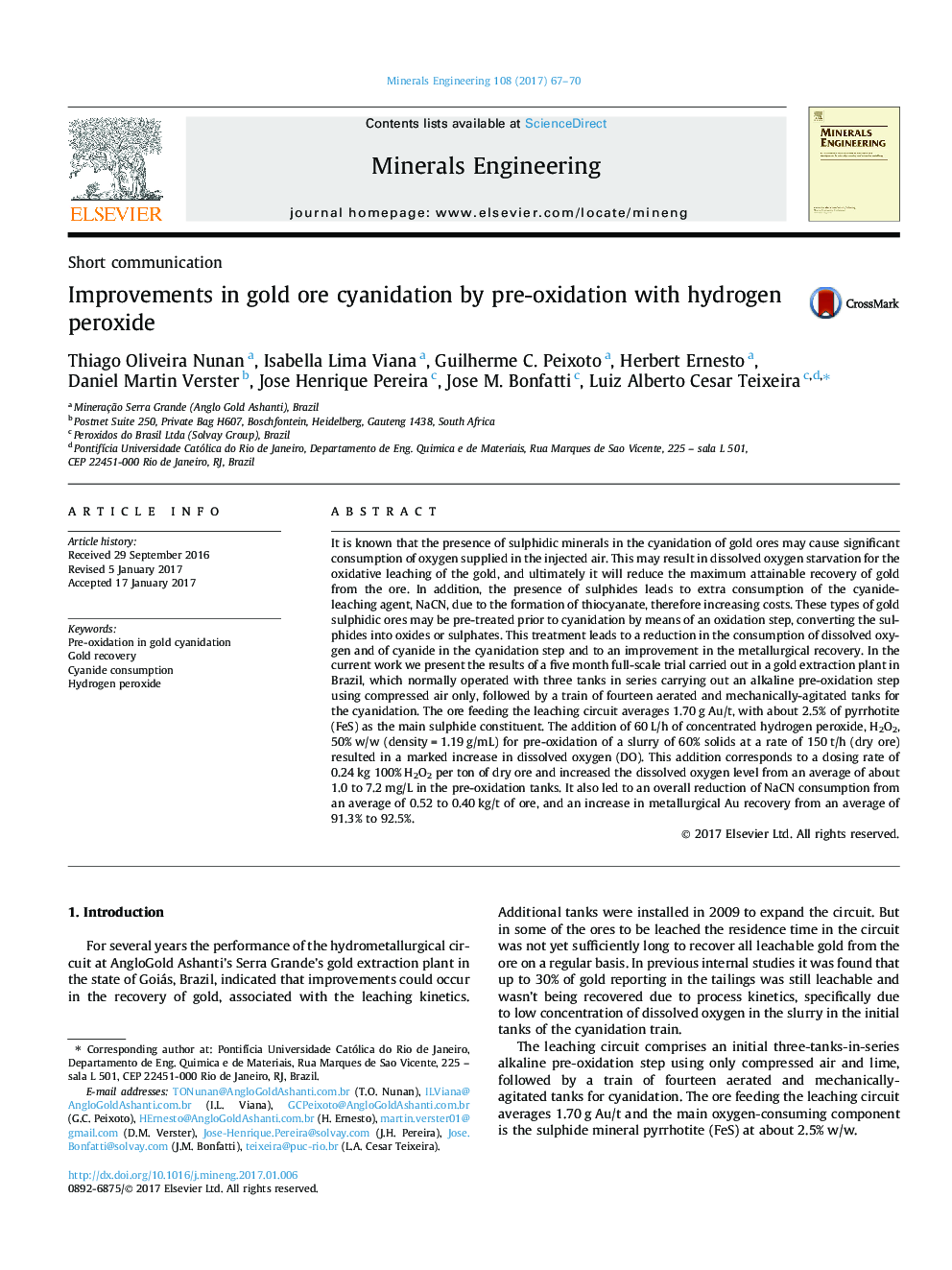| کد مقاله | کد نشریه | سال انتشار | مقاله انگلیسی | نسخه تمام متن |
|---|---|---|---|---|
| 4910198 | 1427604 | 2017 | 4 صفحه PDF | دانلود رایگان |
عنوان انگلیسی مقاله ISI
Improvements in gold ore cyanidation by pre-oxidation with hydrogen peroxide
ترجمه فارسی عنوان
ارتقاء ساییدینگ سنگ معدن طلا توسط پیش اکسیداسیون با پراکسید هیدروژن
دانلود مقاله + سفارش ترجمه
دانلود مقاله ISI انگلیسی
رایگان برای ایرانیان
موضوعات مرتبط
مهندسی و علوم پایه
مهندسی شیمی
مهندسی شیمی (عمومی)
چکیده انگلیسی
It is known that the presence of sulphidic minerals in the cyanidation of gold ores may cause significant consumption of oxygen supplied in the injected air. This may result in dissolved oxygen starvation for the oxidative leaching of the gold, and ultimately it will reduce the maximum attainable recovery of gold from the ore. In addition, the presence of sulphides leads to extra consumption of the cyanide-leaching agent, NaCN, due to the formation of thiocyanate, therefore increasing costs. These types of gold sulphidic ores may be pre-treated prior to cyanidation by means of an oxidation step, converting the sulphides into oxides or sulphates. This treatment leads to a reduction in the consumption of dissolved oxygen and of cyanide in the cyanidation step and to an improvement in the metallurgical recovery. In the current work we present the results of a five month full-scale trial carried out in a gold extraction plant in Brazil, which normally operated with three tanks in series carrying out an alkaline pre-oxidation step using compressed air only, followed by a train of fourteen aerated and mechanically-agitated tanks for the cyanidation. The ore feeding the leaching circuit averages 1.70 g Au/t, with about 2.5% of pyrrhotite (FeS) as the main sulphide constituent. The addition of 60 L/h of concentrated hydrogen peroxide, H2O2, 50% w/w (density = 1.19 g/mL) for pre-oxidation of a slurry of 60% solids at a rate of 150 t/h (dry ore) resulted in a marked increase in dissolved oxygen (DO). This addition corresponds to a dosing rate of 0.24 kg 100% H2O2 per ton of dry ore and increased the dissolved oxygen level from an average of about 1.0 to 7.2 mg/L in the pre-oxidation tanks. It also led to an overall reduction of NaCN consumption from an average of 0.52 to 0.40 kg/t of ore, and an increase in metallurgical Au recovery from an average of 91.3% to 92.5%.
ناشر
Database: Elsevier - ScienceDirect (ساینس دایرکت)
Journal: Minerals Engineering - Volume 108, July 2017, Pages 67-70
Journal: Minerals Engineering - Volume 108, July 2017, Pages 67-70
نویسندگان
Thiago Oliveira Nunan, Isabella Lima Viana, Guilherme C. Peixoto, Herbert Ernesto, Daniel Martin Verster, Jose Henrique Pereira, Jose M. Bonfatti, Luiz Alberto Cesar Teixeira,
